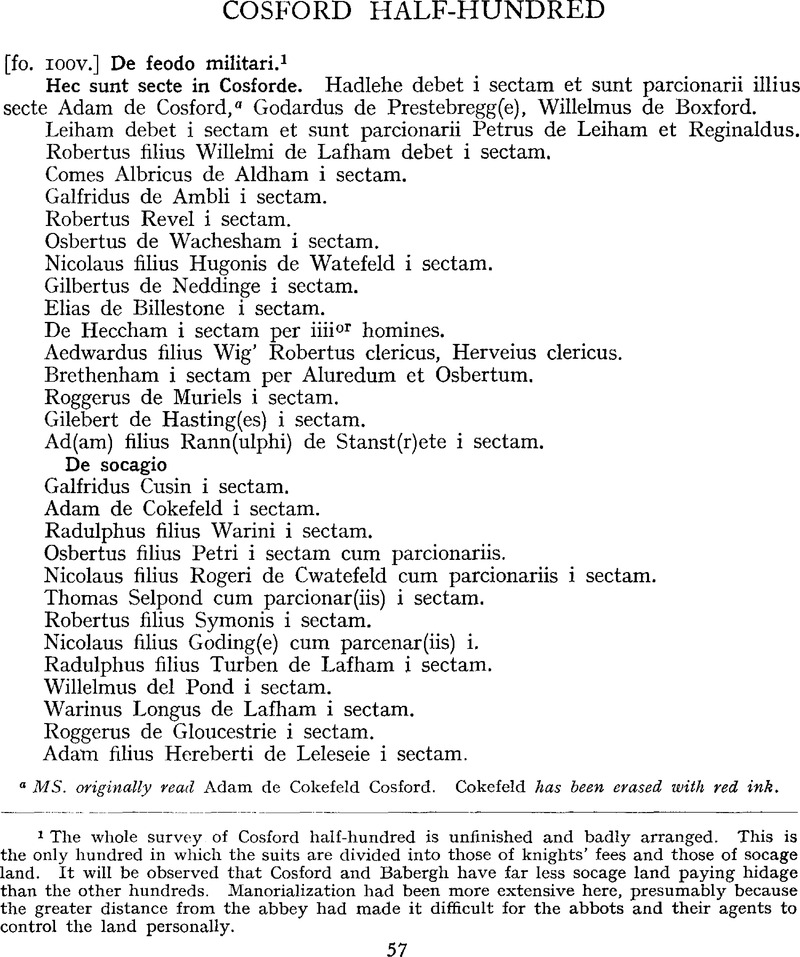No CrossRef data available.
Published online by Cambridge University Press: 24 December 2009

page 57 note 1 The whole survey of Cosford half-hundred is unfinished and badly arranged. This is the only hundred in which the suits are divided into those of knights' fees and those of socage land. It will be observed that Cosford and Babergh have far less socage land paying hidage than the other hundreds. Manorialization had been more extensive here, presumably because the greater distance from the abbey had made it difficult for the abbots and their agents to control the land personally.
page 58 note 1 A Hugh de Semer, probably not the same as this man's father, held one carucate of land from the church of Dickleburgh in 1194. See final concord (13 Oct. 1194) printed in Pinchbeck i. 430.
page 58 note 2 In part iii of Abbot Baldwin's ‘ Feudal Book ’, there was also one carucate of socage land in Kettlebaston that was held as one tenement (D.C.D., p. 44).
page 59 note 1 In Part iii of Abbot Baldwin's ‘ Feudal Book ’ (D.C.D., p. 44), Brettenham had owed 63d. hidage as opposed to 24¼d. in Abbot Samson's Kalendar.
page 59 note 2 See p. 58, n. 1, above. Semer paid more hidage than this (infra, p. 60).
page 59 note 3 Infra, p. 71.
page 59 note 4 This is Lavenham, not Layham, although the main part of Lavenham is in Babergh Hundred, See p. 60, n. 1, below. For Brunloc, Wibolt, Duggel and Siward, see p. 71.
page 60 note 1 See the extract from the final concord with Adam of Cockfield, infra, p. 71. There ‘ Siward Lafham ’ with 66 acres becomes Sinod de Lavenham with 60 acres.
page 60 note 2 Infra, p. 71
page 60 note 3 The identification of many places in the letes is doubtful. A reconstruction of the Domesday tenants is in the Introduction, p. xx.
page 61 note 1 See Introduction, p. xv.